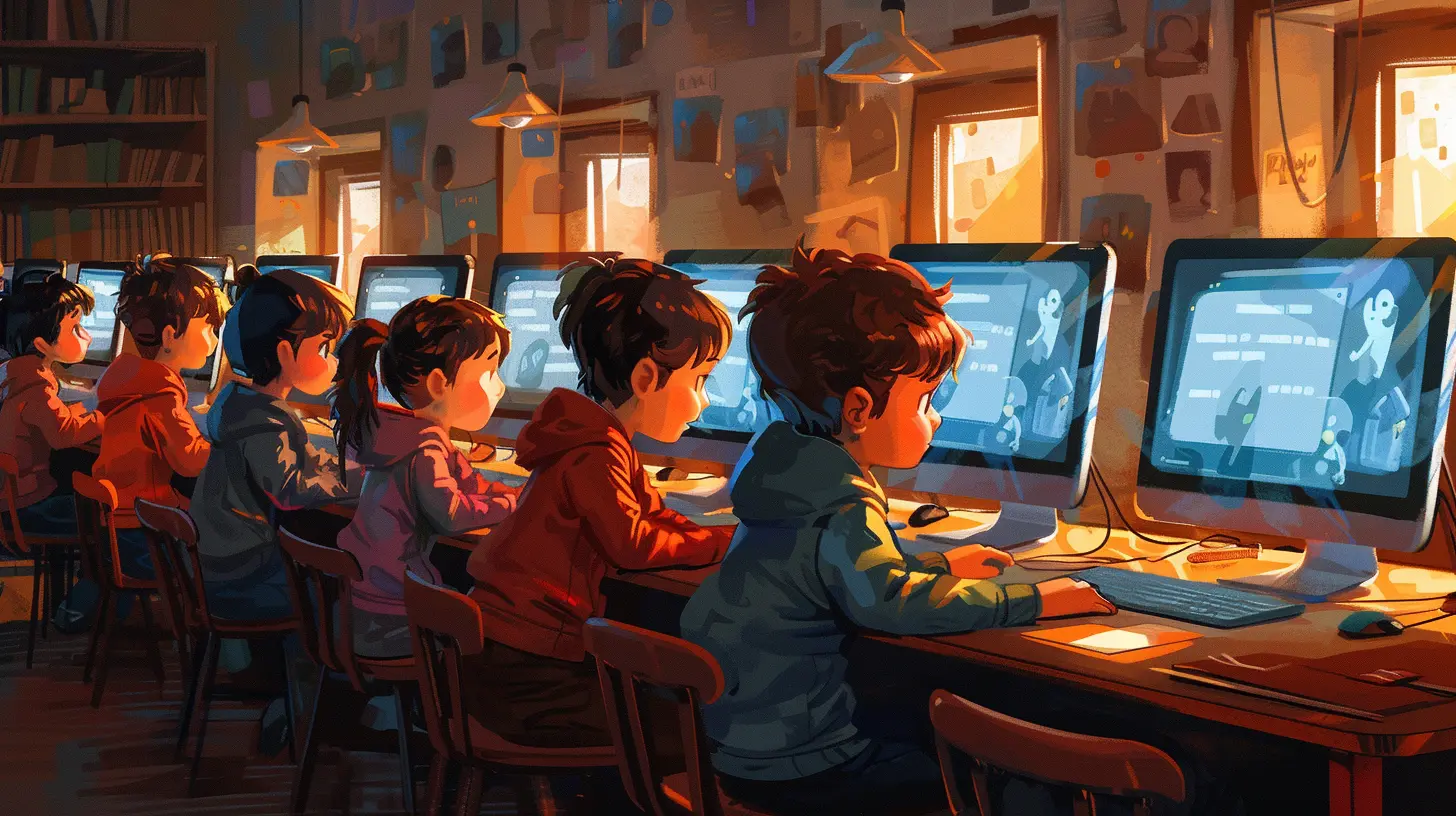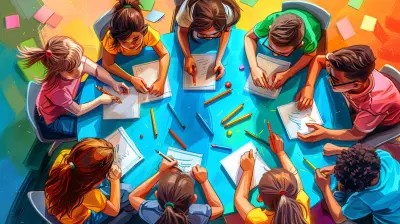Creating a Culture of Collaboration in Virtual Classrooms
8 August 2025
The world of education is changing fast. And guess what’s right at the center of it all? Virtual classrooms. Whether you're a teacher, a student, or a parent, you've probably seen how remote learning isn't just a trend—it's becoming the norm, or at least a significant part of the educational landscape.
But here's the catch: online learning can feel pretty lonely if we're not careful. No classroom buzz. No group huddles. No eye contact or quick side-chats during activities. So how do we bring back that sense of togetherness? Simple. We build a culture of collaboration—right in our virtual spaces.
Let’s dive deep and talk about how we can create a powerful, connected community in virtual classrooms where collaboration isn't just encouraged—it's second nature.
🌐 Why Collaboration Matters Now More Than Ever
Think about your own experiences. Doesn’t learning feel more engaging when you’re bouncing ideas off others? Learning is inherently social. We grow by discussing, debating, and solving problems together. In fact, collaboration:- Improves understanding through shared perspectives
- Builds critical thinking as students challenge each other’s ideas
- Encourages accountability and participation
- Mirrors real-life teamwork situations students will face in careers
In the virtual world, collaboration can be the glue that keeps students engaged, motivated, and connected—not just with the material, but with their peers too.
🧱 Laying the Foundation: What Does A Collaborative Virtual Environment Look Like?
Before we jump into techniques, let’s sketch a picture.A collaborative virtual classroom isn’t just a Zoom meeting with breakout rooms. It’s an online space that fosters communication, creativity, and co-creation. Think:
- Students leading group discussions
- Real-time document collaboration
- Group projects with shared responsibilities
- Safe spaces for peer feedback
- Teachers guiding instead of dominating discussions
It’s a digital campfire where everyone has a seat and something valuable to share.
👩🏫 The Teacher’s Role: From Instructor to Collaboration Architect
Want to know the secret sauce to building this kind of environment? It’s you—the teacher. Your role shifts dramatically in a virtual classroom. You're not just delivering lectures anymore; you're designing experiences.Here’s how you do it:
1. Set Clear Expectations Early On
Establish collaboration norms from day one. Talk about respect, active participation, and constructive feedback. Make the expectations vivid, not vague.2. Model Collaborative Behavior
Show students what good collaboration looks like. Share how you work with other teachers. Give examples of how you use feedback. Let them see it in action.3. Create a Safe Space
If students don’t feel emotionally safe, they’re not going to speak up. Encourage every voice. Acknowledge each contribution. Celebrate effort as much as results.
💡 Tools and Tech That Supercharge Collaboration
Thankfully, we live in an age where tools can connect us, even when we’re miles apart. Here are some go-to collaboration boosters for your virtual classroom:- Google Workspace (Docs, Slides, Jamboard): Real-time co-creation made simple.
- Padlet: Visual storytelling and group brainstorming.
- Flipgrid: Video discussions that bring voices and faces into play.
- Slack or Microsoft Teams: Instant communication for group work.
- Kahoot & Quizizz: Team-based learning through fun gamification.
- Trello or Asana: Task management for student-led projects.
Use what fits your style and your students' needs. Don’t overwhelm, just empower.
🤝 Practical Strategies to Build Collaboration From Day One
Now let’s roll up our sleeves. Here’s a toolkit of strategies that turn isolated learners into a buzzing online community.1. Icebreakers That Actually Break Ice
Start every course or lesson with fun, light, low-pressure questions. Think:- “If you could teleport to any place right now, where would you go?”
- “What’s your learning superpower?”
- “Describe your mood today with a meme.”
It gets people talking and builds comfort.
2. Breakout Room Best Practices
Breakout rooms can either be awkward silence zones or collaboration goldmines. To make them effective:- Keep groups small (3-4 people)
- Assign clear roles (note-taker, presenter, timekeeper)
- Give a specific task with a time limit
- Check in midway to keep momentum
3. Collaborative Projects with Real Purpose
Pick projects that solve real-world problems or connect to students’ passions. Let them choose topics, divide responsibilities, and present together. It builds ownership and teamwork.4. Peer Review with Positivity
Set up structured review sessions where students give each other feedback using a simple formula: “I liked…, I wondered…, I suggest…” This builds trust and critical thinking.5. Create Virtual Study Groups
Encourage informal student-led groups for studying, reviewing, or brainstorming. Let them use whatever platform they’re comfortable with—Discord, Google Meet, even WhatsApp.6. Gamify Collaboration
Turn teamwork into a challenge. Mini competitions, badges for team achievements, or scavenger hunts across topics—make it fun and a little bit addictive.🌱 Nurturing Emotional Intelligence in Online Collaboration
Here’s the thing—collaboration isn’t just about sharing Google Docs. It’s about empathy, listening, and understanding.In a virtual setting, those soft skills get harder to see, but even more important.
- Start meetings with a quick check-in (“One word to describe your week?”)
- Teach digital body language (like using emojis or reactions properly)
- Encourage disagreement with kindness
- Celebrate team wins together, even if small
Make emotional intelligence part of your collaboration toolkit.
📊 Assessing Collaborative Skills Without Killing the Vibe
Assessment is important—but overdoing it can suck the joy out of collaboration.Instead of grading group work like a math test, try this:
- Use rubrics with self and peer evaluations
- Focus on both product and process (How well did they work together?)
- Celebrate effort and creativity, not just final grades
- Give group feedback along with individual notes
Remember: The goal is growth, not perfection.
🙌 Celebrate Diversity and Inclusion
In virtual classrooms, students might be tuning in from across town—or across the globe. That diversity is a massive strength.But to harness it, you’ve got to make space for different voices, cultures, and experiences.
- Encourage students to bring their backgrounds into projects
- Be mindful of language barriers or tech access issues
- Rotate team roles so everyone has a chance to lead
- Watch out for unconscious bias in group formation or evaluations
Diverse teams are stronger teams. They reflect the real world and make learning richer.
🔄 Keep Improving: Reflection and Feedback
Even the best collaboration strategies can be improved over time. Don’t be afraid to ask your students:- What’s working?
- What feels awkward?
- How could we collaborate better?
Use polls, anonymous surveys, or group discussions to get honest feedback. Then implement changes. When students see their input shaping the classroom, they feel more invested.
🚀 Final Thoughts: Collaboration is the New Classroom Currency
Creating a culture of collaboration in virtual classrooms isn’t about fancy tech or endless group projects. It’s about connection, communication, and community.When students feel seen, heard, and valued—they engage more. When they engage more—they learn more.
As educators, it’s time to shift from being the “sage on the stage” to the “guide on the side.” We’re not just teaching content anymore—we’re creating environments where ideas flow, questions spark conversations, and every student feels like a vital part of the learning journey.
So, take that first step. Start small, build trust, and let collaboration become the heartbeat of your virtual classroom.
Let’s not just teach online—let’s build thriving learning communities from behind the screen.
all images in this post were generated using AI tools
Category:
CollaborationAuthor:

Fiona McFarlin
Discussion
rate this article
1 comments
Finnegan McQuade
Great insights! Fostering collaboration in virtual classrooms can transform learning experiences. It’s all about building connections and encouraging open communication—let's make online learning just as engaging as in-person!
August 21, 2025 at 3:22 AM

Fiona McFarlin
Thank you! I completely agree—fostering collaboration is key to enriching virtual learning experiences. Let's keep inspiring connection and communication!


